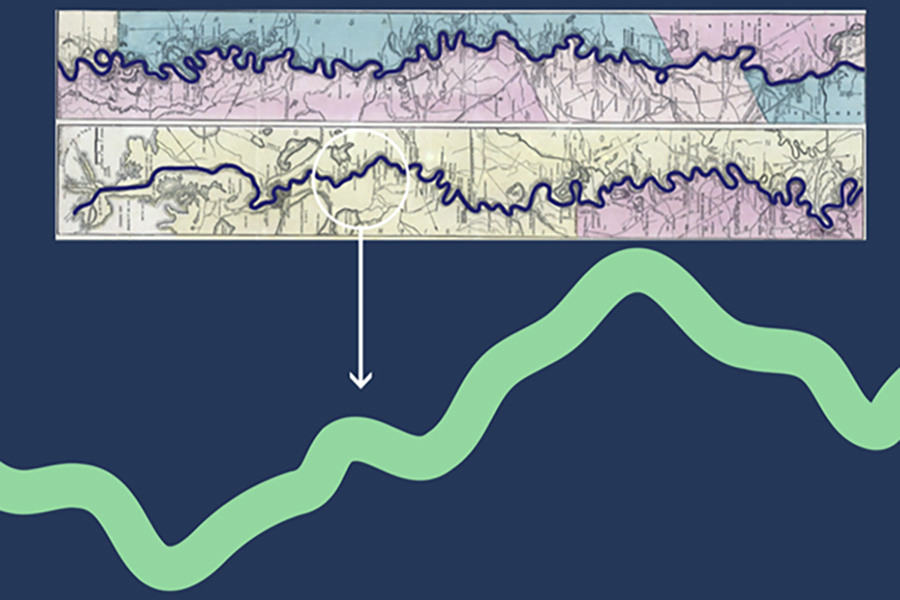
“Where Science Connects Us” is the theme for AGU25. (Source: AGU)
AGU Fall Meeting to focus on the connections that underpin the Earth and space science community
MIT CS3 presentations highlight multiple sustainability challenges and solutions
The largest gathering of Earth and space scientists, the AGU (American Geophysical Union) Fall Meeting draws more than 25,000 attendees from over 100 countries each year to share research findings and identify innovative solutions to complex problems. Organized around the theme “Where Science Connects Us,” the 2025 AGU Fall Meeting will take place in New Orleans, Louisiana and online on December 15 - 19.
Among the scientists attending this year's AGU Fall Meeting will be 21 first authors of oral and poster presentations, and primary conveners of conference sessions, who are affiliated with the MIT Center for Sustainability Science and Strategy (CS3). Listed below, their 30 presentations and sessions span multiple CS3 research topics, including Earth system modeling; land-atmosphere dynamics; atmospheric science; weather prediction; environmental monitoring and hazard assessment; and flood risk and climate resilience.
Categorized by research topic, these linked presentations and sessions highlight recent findings by CS3-affiliated researchers and their co-authors on a wide range of sustainability challenges and solutions.
Earth system modeling
The development, integration and/or application of models of the Earth’s natural and societal systems
GC51A-01Advancing Emulation for Understanding Nature-Society Interactions (Noelle Selin)
Regional Impacts of Climate Sensitivity on Projected Temperature Trends and Extremes (Popat Salunke)
A52D-07Climate and land use impacts on soil hydrogen sink in the 21st century (Anthony Wong)
Diagnosing and Comparing Sources of Error in Emulators of Earth System Models (Christopher Womack)
Quantifying global and sub-global socioeconomic transition uncertainty for climate management and risk analyses (Jennifer Morris)
GC23C-06Modeling and Assessing the Propagation of the Economic Effects of Extreme Events (Angelo Gurgel)
Land-atmosphere dynamics
The mechanisms and consequences of interactions between land and atmosphere
A data-driven framework to quantify nature-based carbon removal from historic silvoarable landscapes (Filippo Brandolini)
Atmospheric science
The development and application of models aimed at better understanding the functioning of the Earth’s atmosphere, and its responses to emissions of greenhouse gases and ozone-depleting substances
A Prognostic Theory for the Land-Ocean Warming Contrast (Paolo Giani)
Identifying and Quantifying Gas- and Particle-Phase Tracers for Chlorine Oxidation in the Remote Troposphere (Jesse Kroll)
A51A-03Laboratory studies of the oxidative lifecycle of reactive organic carbon (Jesse Kroll)
New data sets from the global AGAGE network of abundances and emissions of chemically and radiatively important trace gases (Luke Western)
Drivers of Tropical Upper Tropospheric Ozone Increases in 1995-2014 and Radiative Forcing Implications (Xinyuan Yu)
A23E-07Quantifying atmospheric methane emissions with satellite observations (Daniel Varon)
A52E-03Warming-induced increases in agricultural soil NH3 and NOx emissions could worsen PM2.5 air quality (Anthony Wong)
Tracking Seasonal and Diurnal Variations in Nitrogen Dioxide and Formaldehyde from Space over the Northeast U.S. (Madankui Tao)
GC34A-06Quantifying the tropospheric ozone radiative forcing from US air pollution controls (Stephanie Elkins)
Weather prediction
The development of more precise weather forecasting models
A52C-01Addressing log-layer mismatch in wall modeled large eddy simulations over rough surfaces and canopies for geophysical flows (Michael Howland)
A13C-02The Sensitivity of Realistic High-Resolution Weather Simulations to Turbulence Parameterizations (Paolo Giani)
Environmental monitoring and hazard assessment
The development and application of models to track environmental changes and threats
U12A-03Integrating Next-Generation Environmental Monitoring and Education Activities for Developing Citizen Science and Improving Global Environmental Literacy (Haruko Wainwright)
Informative Ensemble Learning for Seismic Location and Association (Sai Ravela)
Flood risk and climate resilience
The development and application of models to inform decision-makers seeking to assess and respond to flood risk
Tackling the Triple Threat: An Integrated Modeling Approach to Assess Compound Flood Risk in Coastal Cities (Sami Shokrana)
Modeling Remote Sensing Data Uncertainty for Decision Analytics: A Case Study for Flood Management (Afreen Siddiqi)
NH33A-03Quantifying Hidden Hazards: A Flood Risk Assessment Framework for Urban Underground Spaces Under a Changing Climate (Kenneth Strzepek)
